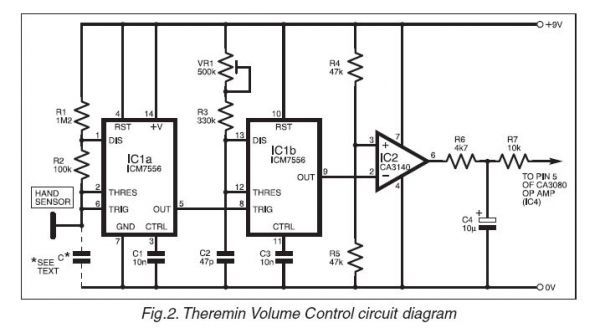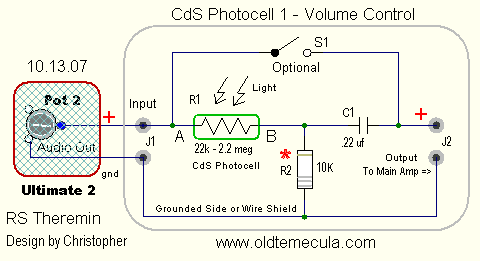Jelly - When you say something like:
"Yes I'm interested in volume control that doesn't have coils and that is linear and responsive surely it's not that hard?."
Do you think Bob Moog put expensive coils into his design if it was a "simple matter" to design a responsive linear volume control without them? Do you think that he just chose coils costing about $2 deliberately to up his costs, rather than using a simple 555 circuit costing <50c ?
I am not trying to wind you up here - Just trying to get you to think about the realities. I am not saying that no person will ever come up with a clever, simple way to achieve what you are after... But I am saying that the 555 circuit you presented is NOT CLEVER - It is rubbish, will have low sensitivity and appalling linearity - and its nowhere close to the quality of the design in the EW.
Anyway - I wont be engaging in this topic anymore.. I was once foolish enough to think that theremin design was 'simple', that I never needed inductors, and that an inductorless theremin which knocked the cr*p out of the old technology would be in my hands in months - I had been an electronics design engineer for 30 years, and I never saw the inherent complexity within what looks like such a simple design..
Good luck! ;-)
Fred.




